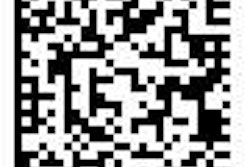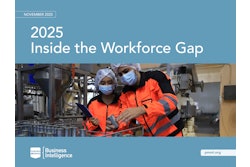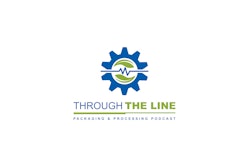Imagine the challenge a visually impaired person faces when he or she picks up a traditional medicine bottle, not sure how often the drug should be taken, what its potential side effects might be, how many refills remain on the prescription, and so on. In the past year or so, that challenge has been made easier for patients at the U.S. Department of Veterans Affairs Illiana Healthcare System in Danville, IL.
In that time, the veterans hospital and in- and out-patient clinic has employed “Rex,” a talking pill bottle that enables patients to push a button on the bottle and hear prescription information. Patients can readily feel the button because it is mounted on a “ridge” molded into the bottle and base. As the patient presses and holds the button, he or she hears a human-like, computer-generated voice say the patient’s name, identify the drug in the bottle, the drug quantity, usage directions, potential side effects, prescription number, and how many refills remain.
Rex was originally developed by MedivoxRx Technologies, a company founded in 2000. The impetus behind Rex’s creation was discussion between a VA pharmacist and a VA Visual Impairment Services Team (VIST) coordinator who recognized the need for a device to assist seeing-impaired individuals. MedivoxRx is now a division of Wizzard Software Corp., following Wizzard’s April 2004 acquisition. Wizzard is recognized in the field of speech technology development. The company developed the technology Rex uses to provide verbal instruction to sight-impaired patients.
“We probably have as many as 50 sight-impaired patients using these bottles,” says Bob Dickinson, supervisory pharmacist in outpatient pharmacy at the Danville facility. “At the pharmacy, we put a bottle into an inexpensive recording device, push the button, and the pharmacist says the information into the device. We began using this about a year or year-and-a-half ago after our sight-impaired coordinator attended a conference where several systems were presented to help blind patients ‘read’ their medicine bottles.”
One of those systems used radio-frequency identification (RFID) to enable patients to use a handheld scanner to read information embedded on a bottle label. That system was used at Hines Veterans Hospital in the Chicago area.
“We like the simplicity of this talking pill bottle system,” says Dickinson. “It’s more foolproof than other alternatives. It requires less equipment and technical knowledge on the patient’s part.”
Harding Manufacturing injection molds the three polypropylene components that make up the package. The company assembles them and ships them to the hospital. To open and close the amber bottle, the patient pushes down the white closure and twists it.
The bottom white base makes this package unique. It houses the electronic components that enable Rex to talk. Harding snap fits this piece onto the bottle so that it cannot be removed. The base is carefully positioned so that the ridge that extends down the bottle’s entire length aligns with an identical ridge on the base. The button used by patients to make Rex talk extends from the base. The ridge itself is significant as it makes it easier for blind patients to use their fingers to locate the button.
When the patient depresses the button, a contact is made with a microswitch mounted to a circuit board, thus activating the voice. The sound comes out of the bottom of the bottle, through a series of small holes in a recessed area that resembles a speaker.
Although this bottle costs more than standard prescription bottles, Dickinson says it’s a comparatively small additional expense for the VA facility because Danville can order bottles in small quantities to meet the limited number of patients who use the bottles. Dickinson also says the talking prescription bottle and recording device are more affordable than competitive systems.
As this issue of Packaging World went to press, Wizzard Software expected to launch in August a second-generation version of Rex that electronically records label information from a pharmacy’s computer software, eliminating the need for a pharmacist to record the details.
In the next six to nine months, Wizzard president Chris Spencer and general manager Eugene Franz say a third-generation version will be available. That version is expected to provide additional patient benefits. One possibility would be to safeguard against duplicate dosage. In the event a patient opens the bottle after taking the prescribed dose for that day, a warning could provide that information to the patient.
Wizzard Software and MedivoxRx Technologies will market the talking prescription pill bottle both to VA locations and to retail pharmacies. Initially, Spencer believes the bottle will be used by visually impaired individuals, but he also suggests it is practical for those with cognitive disabilities and for patients who have difficulty understanding their prescriptions.


























